Archive for the ‘Artists/Other’ Category
Tuesday, August 14th, 2018
“Against the assault of laughter, nothing can stand.”
— Mark Twain
The evolving medium of collage betrayed its sense of humor from the outset, over a hundred years ago. There are countless variants of humor — satire, sarcasm, incongruity, hyperbole, mild irony, outright farce — to cite merely a few. 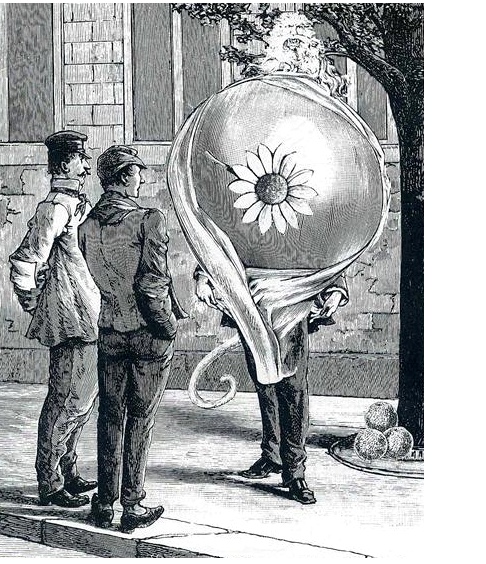 Most, if not all, have presented themselves in a collage format during the tumultuous century that followed. From my point of view, the humor we may find in Dada and Surrealism are byproducts of the movements’ overarching goals. But, we might ask, was the avant-garde intending to be funny at times, or were they deadly serious about weaponizing shock value as a visual tactic, bequeathing any laughs to those of us who would arrive many decades later? On the other hand, how can poking fun at established traditions and ideologies not be classified as humor? I welcome the thoughts of all readers who have chuckled at the work of Hannah Höch, or sensed dark amusement in a Max Ernst composition. Even when outrage from a target group is the primary objective, a subversive artist also may be hoping to elicit a humorous response from those of like mind. As we know, humor, like beauty, rests in the eye of the beholder.
Most, if not all, have presented themselves in a collage format during the tumultuous century that followed. From my point of view, the humor we may find in Dada and Surrealism are byproducts of the movements’ overarching goals. But, we might ask, was the avant-garde intending to be funny at times, or were they deadly serious about weaponizing shock value as a visual tactic, bequeathing any laughs to those of us who would arrive many decades later? On the other hand, how can poking fun at established traditions and ideologies not be classified as humor? I welcome the thoughts of all readers who have chuckled at the work of Hannah Höch, or sensed dark amusement in a Max Ernst composition. Even when outrage from a target group is the primary objective, a subversive artist also may be hoping to elicit a humorous response from those of like mind. As we know, humor, like beauty, rests in the eye of the beholder.
Eduardo Paolozzi created his whimsical Bunk! collage series in 1947. During that same year, Kurt Schwitters, 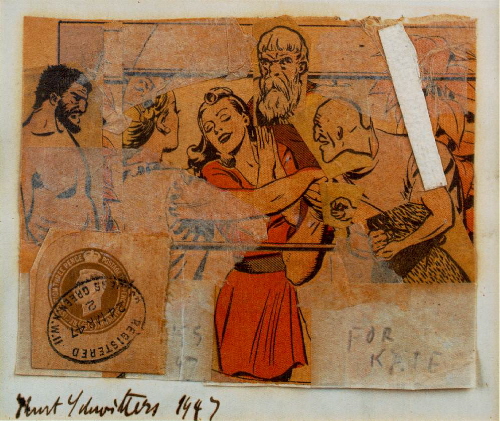 with the bulk of his far-reaching breakthroughs behind him, displayed his acknowledged sense of humor when he created “For Kate.” Both were envisioning the coming thing — Pop Art (Popism) — a movement to throttle the contemporary scene some 20 years later. Steve Martin got it right when he explained, “Chaos in the midst of chaos isn’t funny, but chaos in the midst of order is.” Did Mark Twain anticipate a Mel Brooks and how the art of stimulating laughter could enable a towering denunciation of fascism? Are there times when creativity’s greatest power is best unlocked with a joke?
with the bulk of his far-reaching breakthroughs behind him, displayed his acknowledged sense of humor when he created “For Kate.” Both were envisioning the coming thing — Pop Art (Popism) — a movement to throttle the contemporary scene some 20 years later. Steve Martin got it right when he explained, “Chaos in the midst of chaos isn’t funny, but chaos in the midst of order is.” Did Mark Twain anticipate a Mel Brooks and how the art of stimulating laughter could enable a towering denunciation of fascism? Are there times when creativity’s greatest power is best unlocked with a joke?
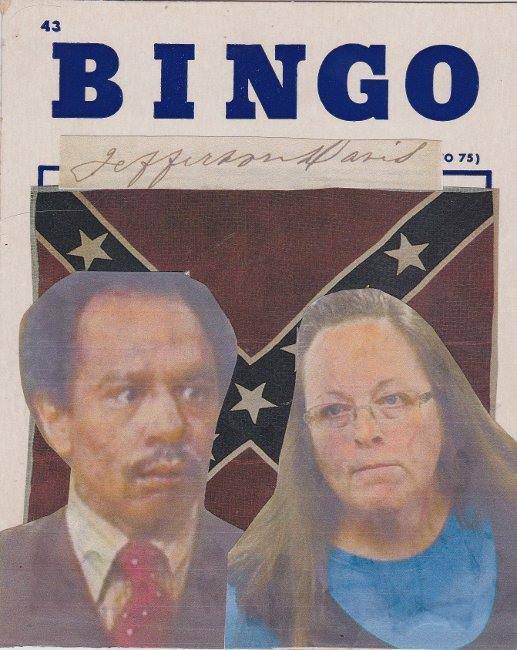 Now indulge me as I feature a few examples of humor in collage from artists that have touched my funny bone. I must admit that this subject brings to mind Terry R Flowers, perennial wit in the art form. It would be too easy to fill a screen with an array of his artistic wisecracks, especially in his role as veteran collaborator with Robert Hugh Hunt.
Now indulge me as I feature a few examples of humor in collage from artists that have touched my funny bone. I must admit that this subject brings to mind Terry R Flowers, perennial wit in the art form. It would be too easy to fill a screen with an array of his artistic wisecracks, especially in his role as veteran collaborator with Robert Hugh Hunt.
Some of these practitioners rely on a minimalist, juxtapositional approach — a sort of comedic “one-liner” — while others evoke a wry quality with a more complex effect. Perhaps nothing is more subjective than humor, so let them speak for themselves.
You’re encouraged to bring others to my attention, and I’ll prepare a follow-up entry!
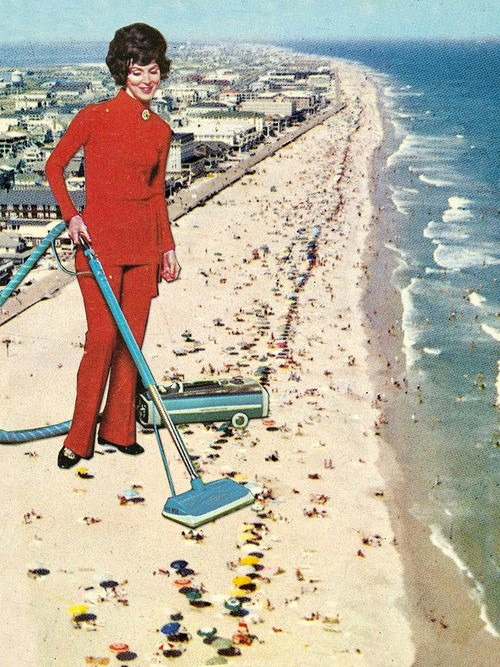
Eugenia Loli
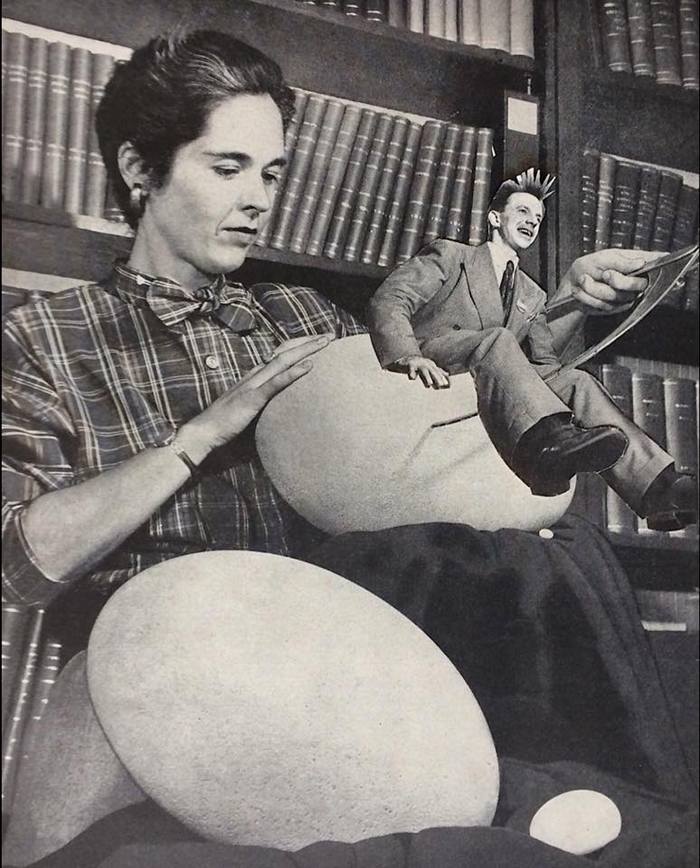
Susan Ringler
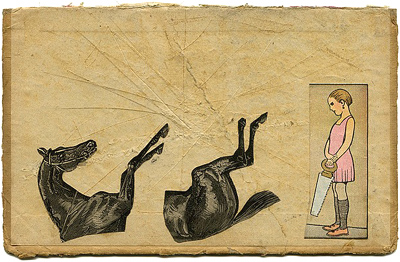
Dani Sanchis
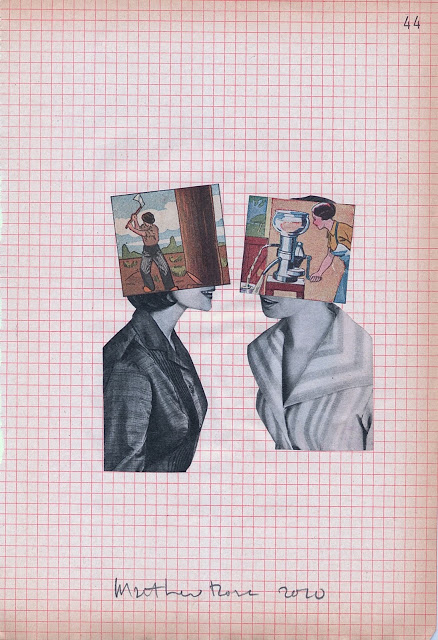
Matthew Rose
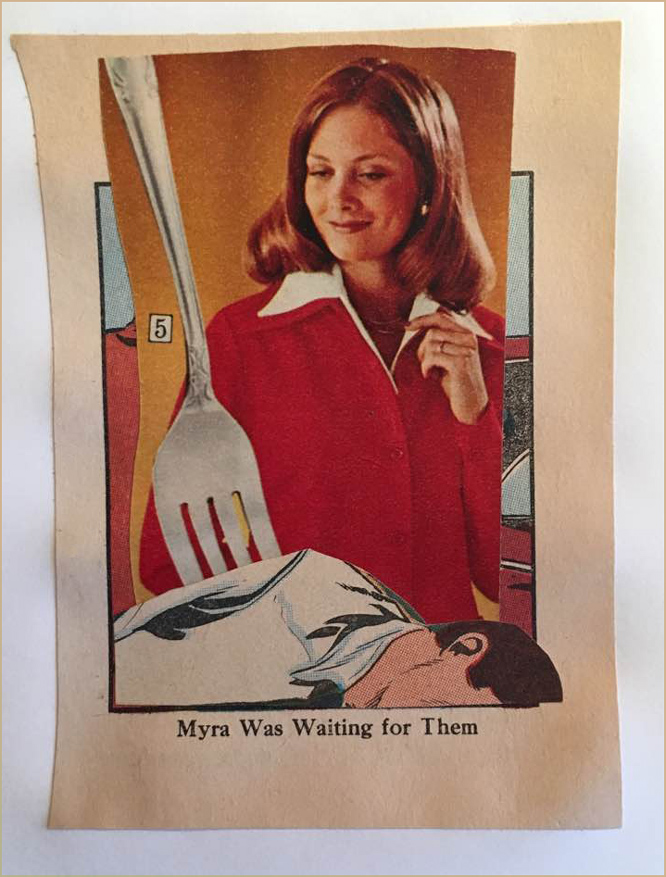
Bob Scott
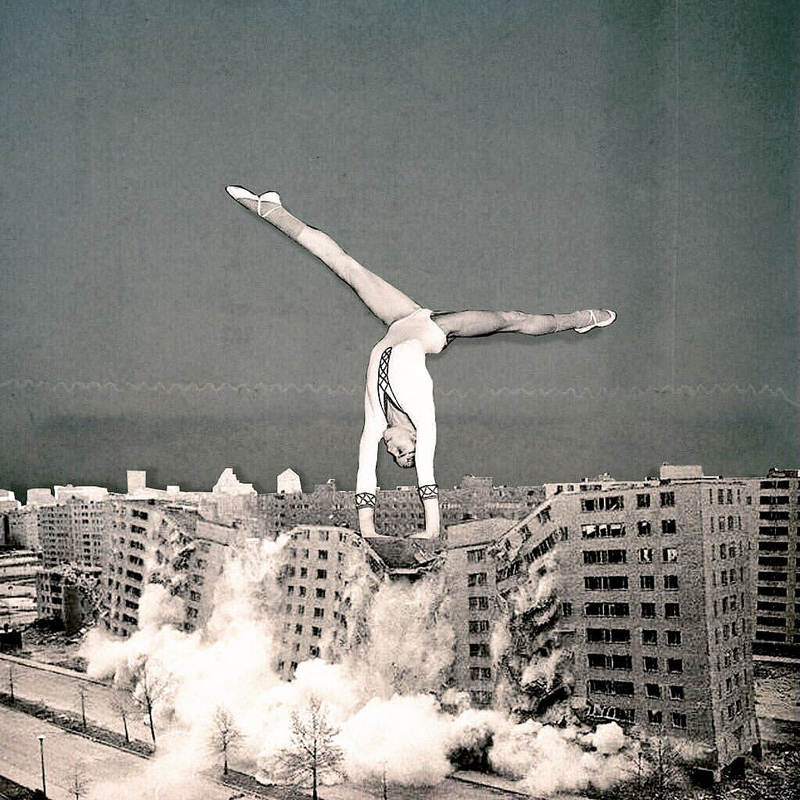
Sato Masahiro
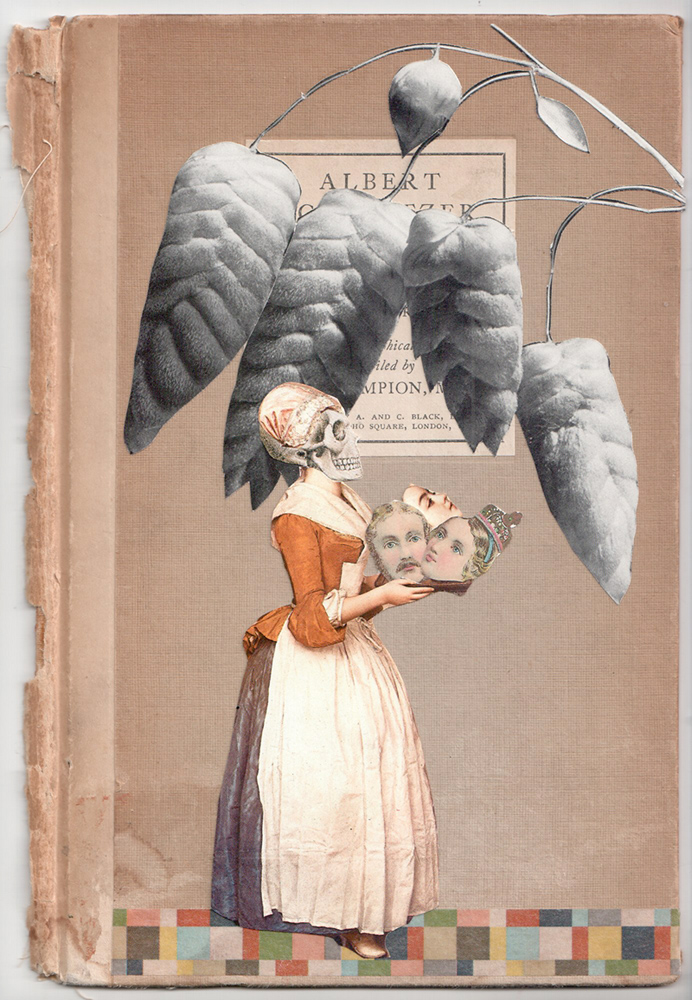
Sabine Remy
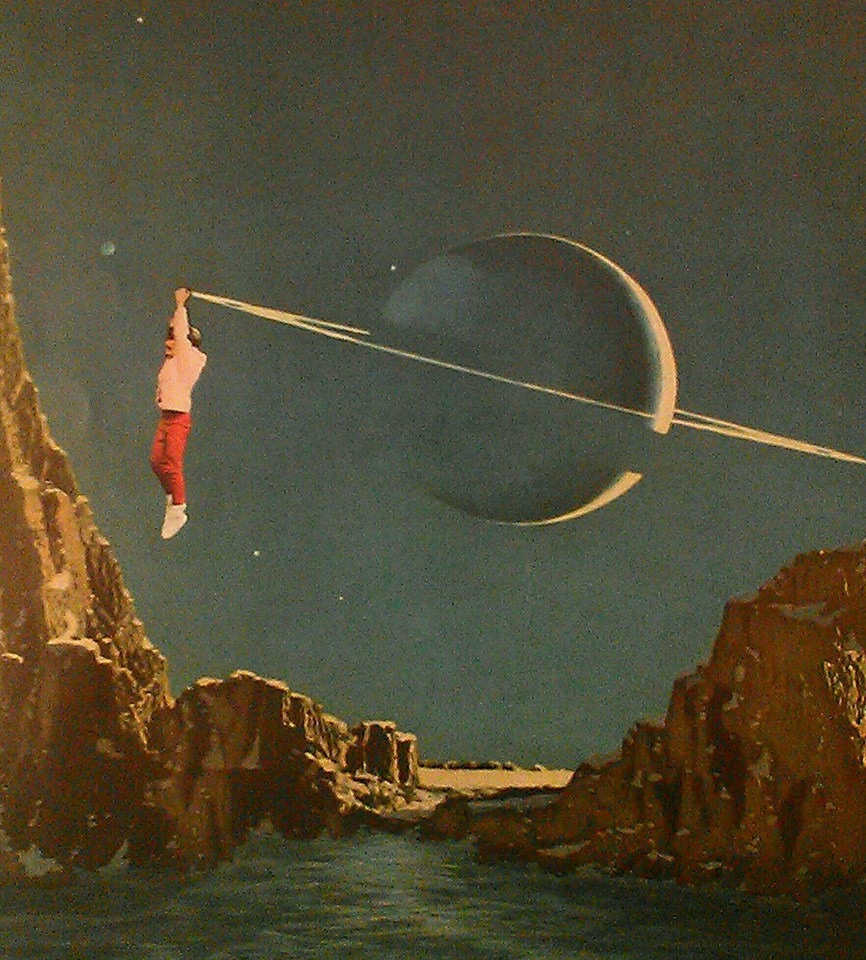
Raul Ruzzene
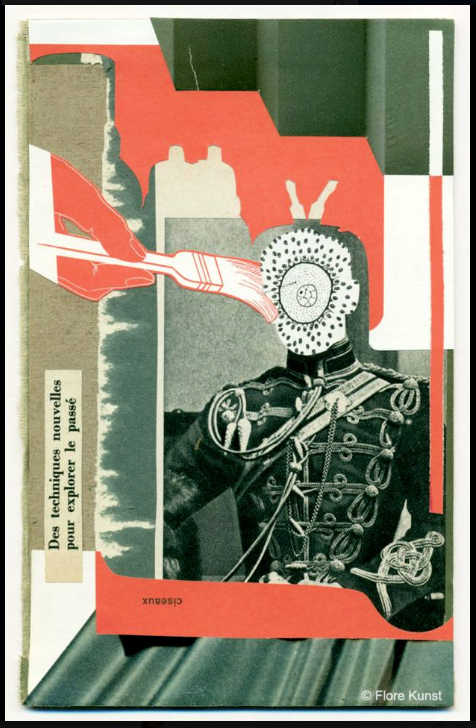
Flore Kunst
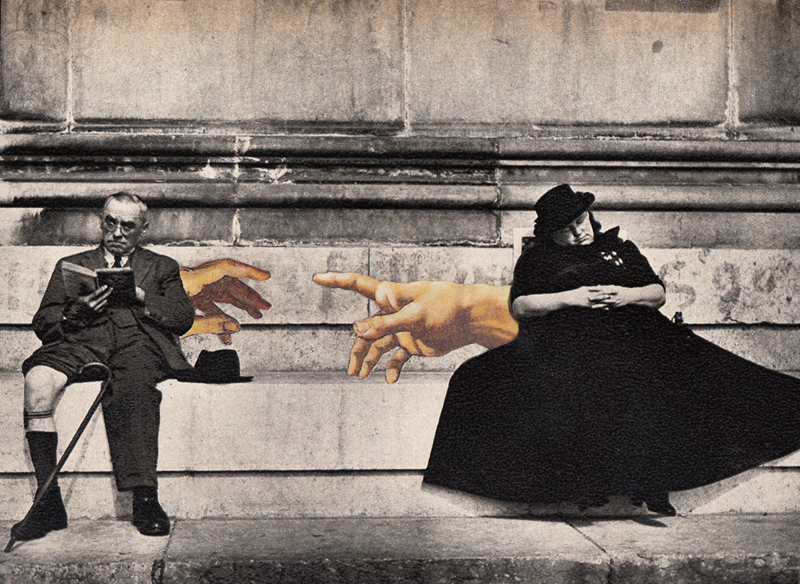
Terry R Flowers
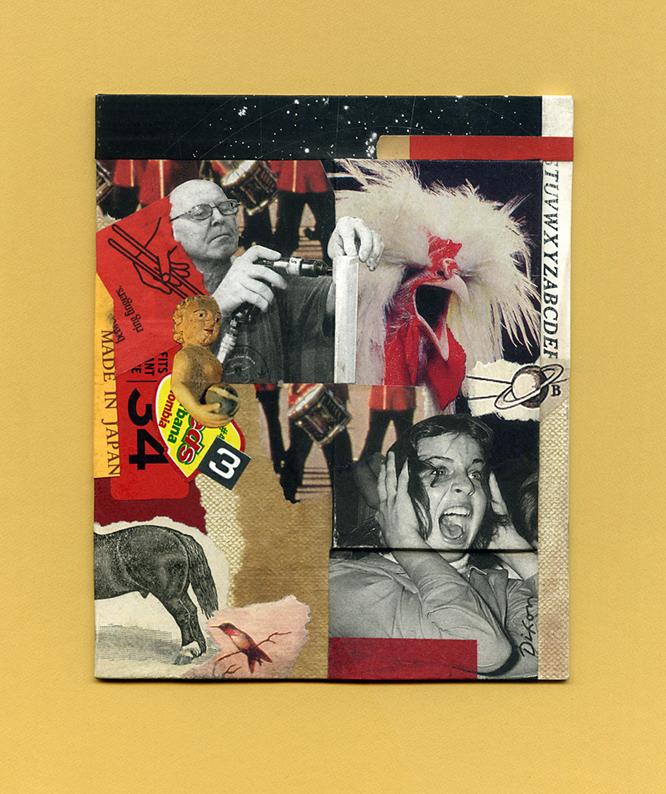
John Andrew Dixon ~ buy now
Posted in 1) Available!, B Scott, D Sanchis, E Loli, E Paolozzi, F Kunst, H Höch, J A Dixon, K Schwitters, M Brooks, M Ernst, M Rose, M Twain, R H Hunt, R Ruzzene, S Masahiro, S Remy, S Ringler, T R Flowers | No Comments »
Saturday, March 24th, 2018
“Even in the absence of inspiration and talent, I think that through sheer craft you can actually create extremely good work, all the time, reliably. Great work is something else. I think for great work you also need a lot of luck. You can only aspire to really good work. The great work either happens or it doesn’t.”
— Christoph Niemann
Sloppy collage artwork has never held much appeal for me. Individuals might define “sloppy” differently, so I’ll rephrase that. I have always found well-crafted collage artwork to be the most appealing. In practice, I have aspired to the highest level of artisanship to which I am capable. According to my peculiar notions, the very nature of collage as a “mash-up” of visual ingredients suggests that one resist all the inherent temptations to condone careless techniques. To do anything less is a disservice to the medium, and strikes me as being a bit lazy.
I have been at this long enough to contrast current activity with a study of my “early” work. I perceive it now as more crisp and aligned with my long stint as a designer and illustrator. I remain proud of craftsmanship that continues to challenge my present hand skills. Like everyone who sticks around, I have moved relentlessly toward a period of life when manual dexterity and vision are unlikely to improve. At any rate, clean, precise work is more about attitude and personal commitment than it is about facility. Lately, on the other hand, I have sought a more organic, less contrived look — the impression that a piece is naturally the way it should be, rather than appear too obviously composed and belabored. As I work, I try not to permit the goal of a somewhat softer and cohesive whole to suggest a relaxation of craft. In fact, I have gradually introduced steps in the process that demand extra time and attention: sanding the reverse side of ingredients for adhesive-saturated compression and eliminating white edges on printed scrap to enhance a seamless effect. I combine that with ample burnishing and some hair-dryer prep before curing time under weight, followed by multiple light-touch coats of matte sealant. I would rather be thinking about practical methodology or a musical playlist than what is literally evolving on the surface before me, allowing that to be as intuitive as possible.
And perhaps (just maybe), Lady Luck will smile.
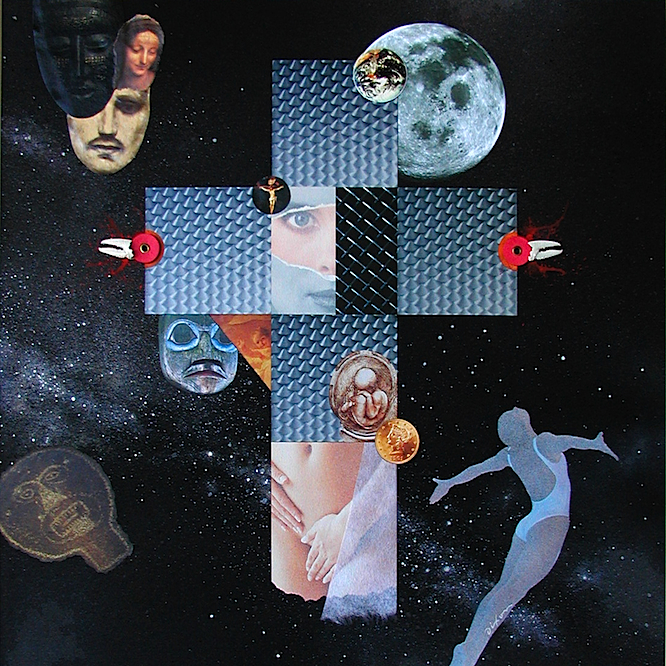
Cosmic Crucifixion
mixed-media collage by J A Dixon
2006, 16 x 16 inches
available for purchase
Posted in Artifacts, C Niemann, Collage, Criticism, Graphic Design, Illustration, Ingredients, J A Dixon, Larger Works, Methodology, Priorities, Technique | No Comments »
Saturday, March 10th, 2018
“In the ’20s, dadaist Kurt Schwitters collected bits of detritus such as cigar bands and bus tickets and used them in collages. They were shocking then but with the passage of time have taken on the aura of classics: vibrantly colored and harmonious arrangements of abstract forms and only incidentally assemblages of junk.”
— John Ashbery
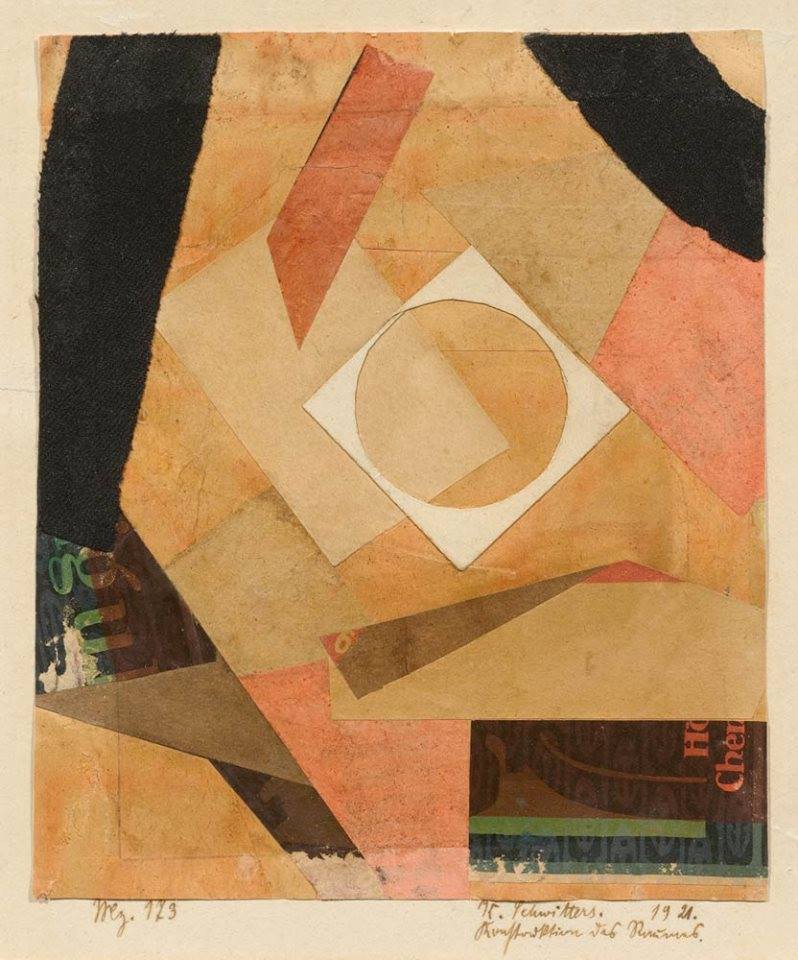
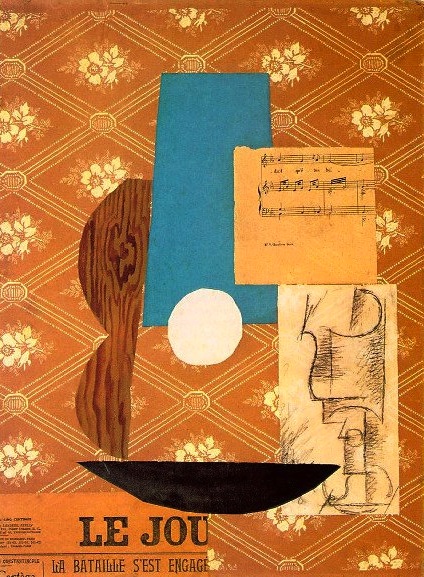 About a hundred years ago, a handful of Europeans had set out to invent what we now know as the medium of collage. Nearly all of them were painters. From the beginning, collage was rooted in modern art concepts that were emerging at the same time — the fundamentals of abstraction. Thus, the evolution of abstraction and collage in the 20th century are entwined, and remain so in a burst of contemporary activity in this post-centennial period. Next year will mark a full century of Merz. Artists working in collage abstraction carry the “creative code” of Kurt Schwitters and his seminal innovations.
About a hundred years ago, a handful of Europeans had set out to invent what we now know as the medium of collage. Nearly all of them were painters. From the beginning, collage was rooted in modern art concepts that were emerging at the same time — the fundamentals of abstraction. Thus, the evolution of abstraction and collage in the 20th century are entwined, and remain so in a burst of contemporary activity in this post-centennial period. Next year will mark a full century of Merz. Artists working in collage abstraction carry the “creative code” of Kurt Schwitters and his seminal innovations. 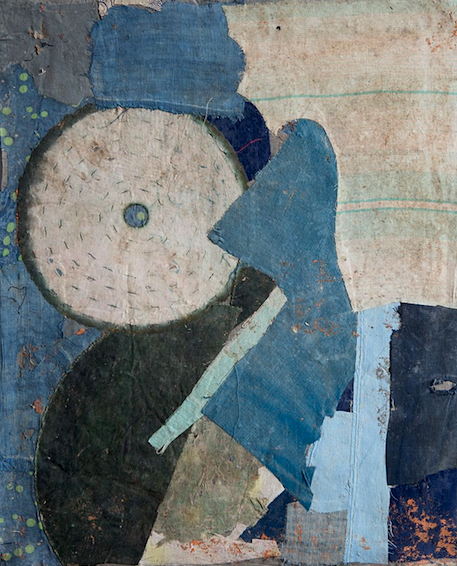 But, allow me to pause here and point out something that has become increasingly obvious: conventional art history was woefully male centered. Intentionally or not, the discipline would downplay or ignore many exceptional women artists, and that includes collage antecedents which were largely the domain of females, especially in the domestic or folk arts. For example, an interesting feature at moowon.com highlights the forgotten art of Chinese textile collage.
But, allow me to pause here and point out something that has become increasingly obvious: conventional art history was woefully male centered. Intentionally or not, the discipline would downplay or ignore many exceptional women artists, and that includes collage antecedents which were largely the domain of females, especially in the domestic or folk arts. For example, an interesting feature at moowon.com highlights the forgotten art of Chinese textile collage. 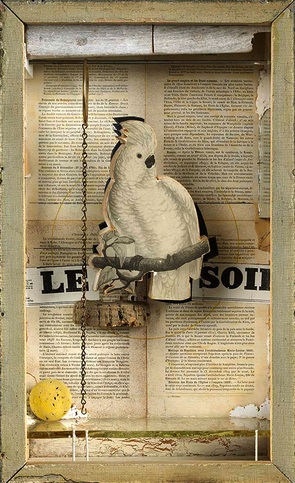 Picasso lifted visual ideas from tribal cultures. Cornell borrowed techniques tied directly to Victorian crafts. We understand that now. Modern art did not spring fully formed from the brow of Zeus like the armored goddess Athena. Fast forward to 2018. Many of the most accomplished and widely recognized collage artists of today are women. And the best part is that we know about them.
Picasso lifted visual ideas from tribal cultures. Cornell borrowed techniques tied directly to Victorian crafts. We understand that now. Modern art did not spring fully formed from the brow of Zeus like the armored goddess Athena. Fast forward to 2018. Many of the most accomplished and widely recognized collage artists of today are women. And the best part is that we know about them.
Melinda Tidwell is one of the dedicated abstractionists in collage that I enjoy following. She has a solid and very articulate designer “upstairs” guiding each decision, but her regard for the unexpected is a strong part of her intuition. Last summer, she published a two-part discussion of “order versus disorder” at her blogsite. It features abstractions by Lance Letscher and is well worth checking out.
Please indulge me as I share examples of collage abstraction from artists who continue to favorably capture my eye. Some of them range into mixed media in a way that remains very much collage. Others are strictly “painting with paper.”
Merz is alive and well in the 21st century, my friends.
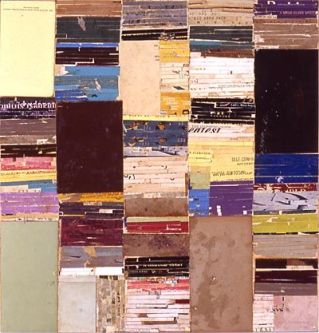
(title unknown)
abstract collage by L Letscher
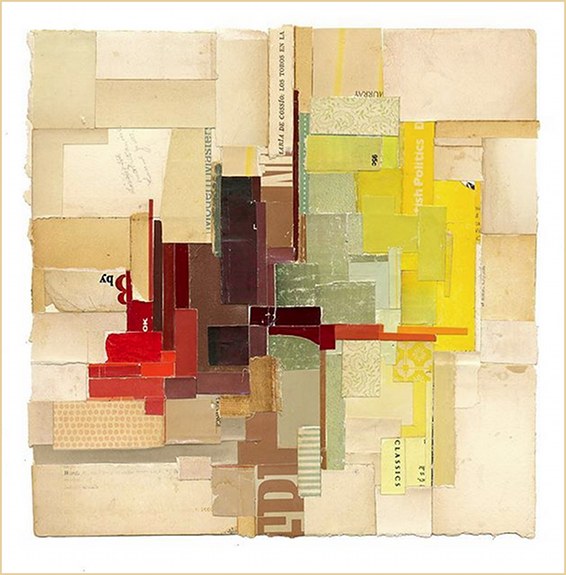
(title unknown)
abstract collage by M Tidwell
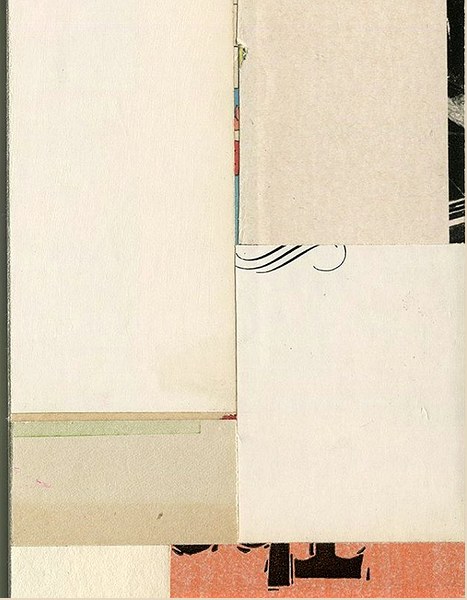
11zc18
abstract collage by Z Collins
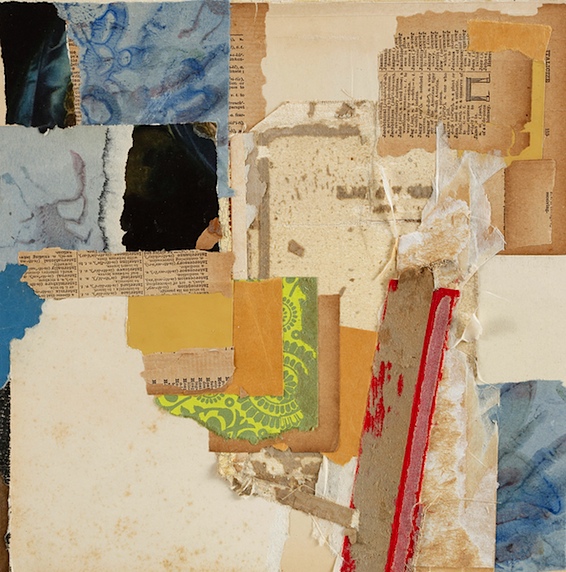
Elysburg IV
abstract collage by C Chapman
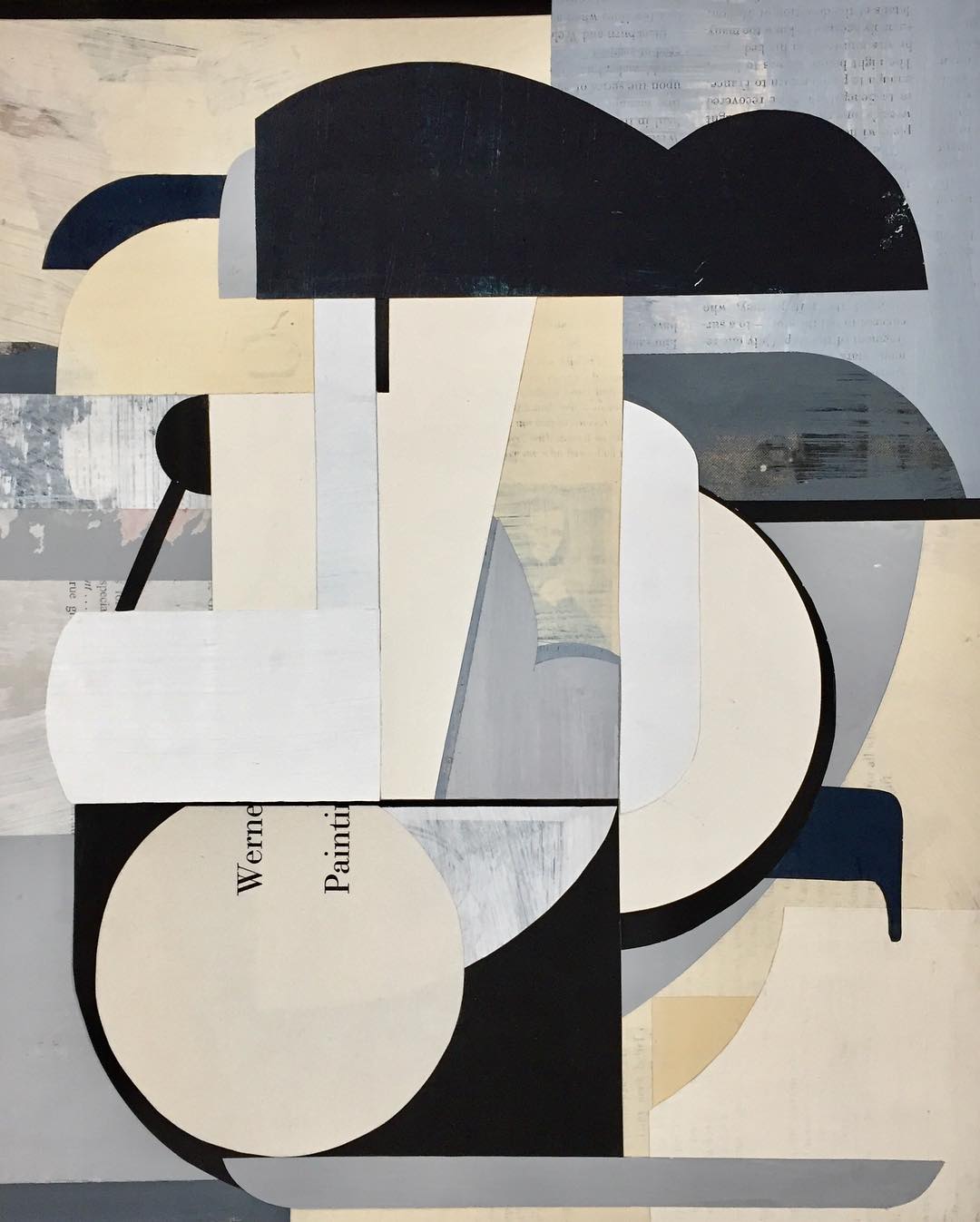
Ellington
abstract collage by D McKenna
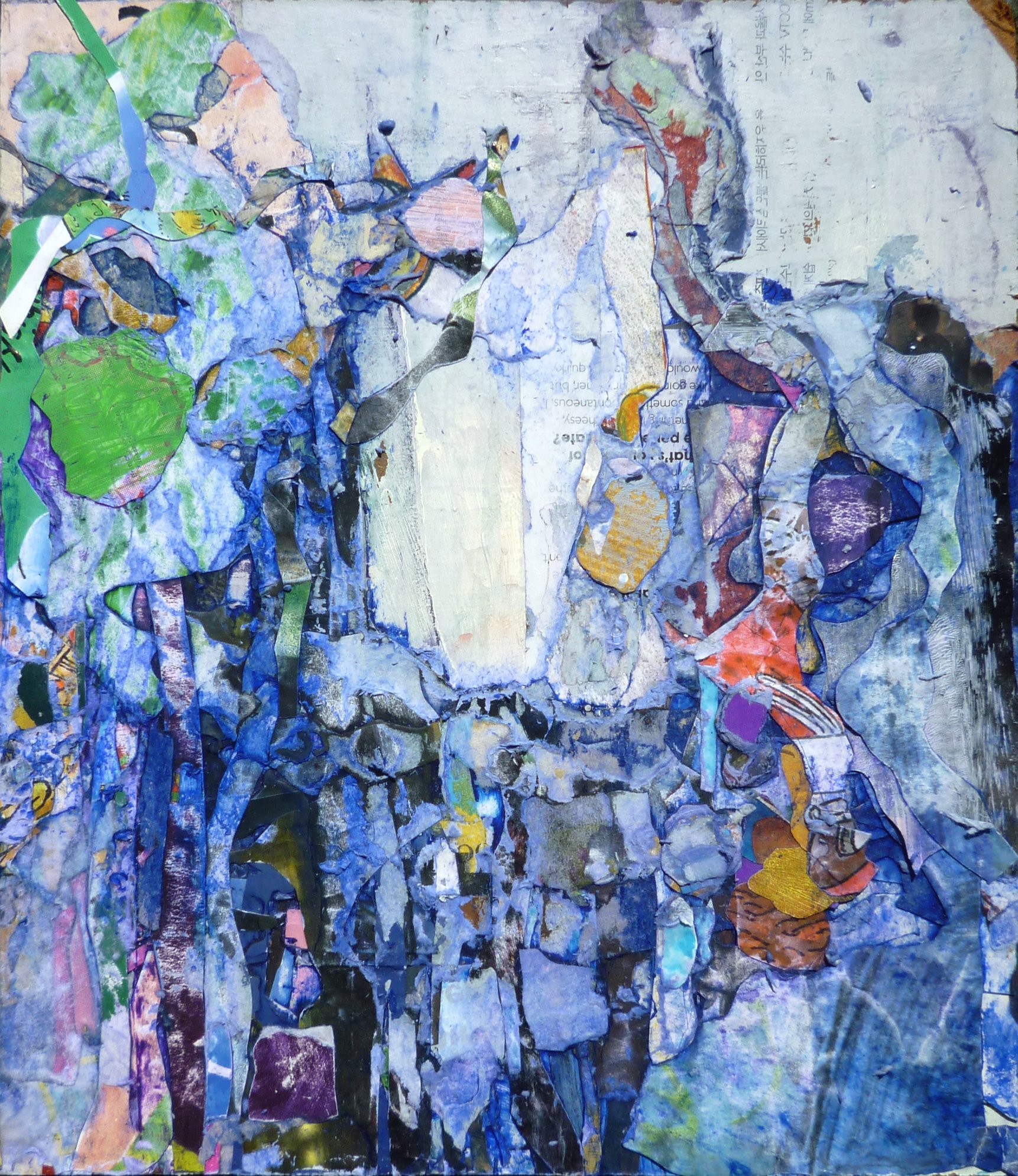
Osmosis 3
abstract collage by C Emeleus
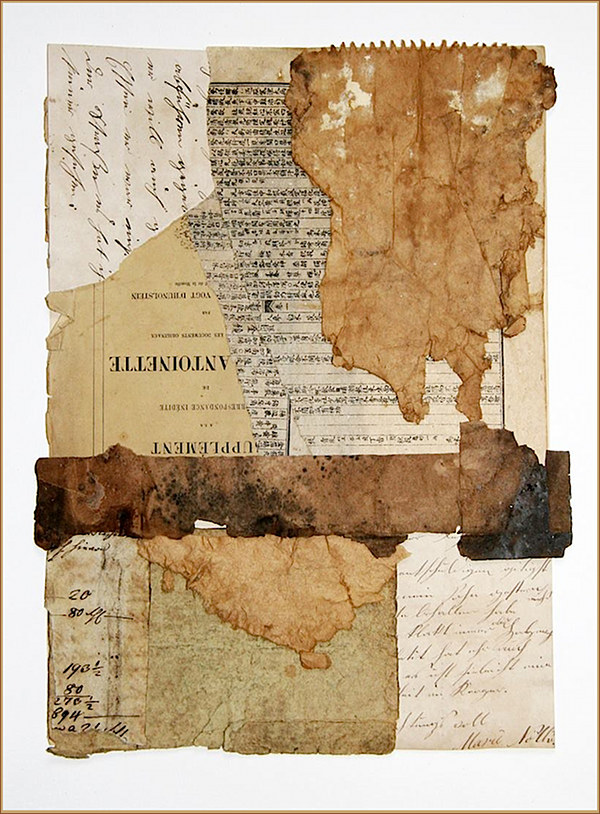
Antoinette
abstract collage by W Strempler
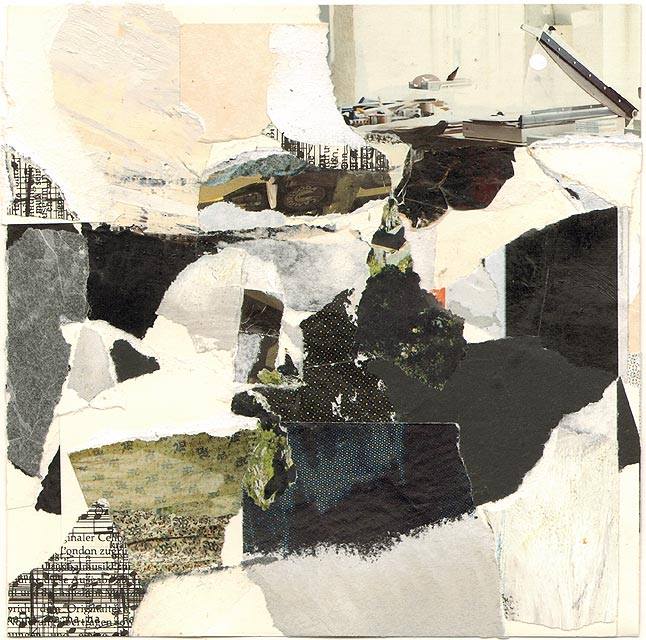
Music
abstract collage by S Kraft
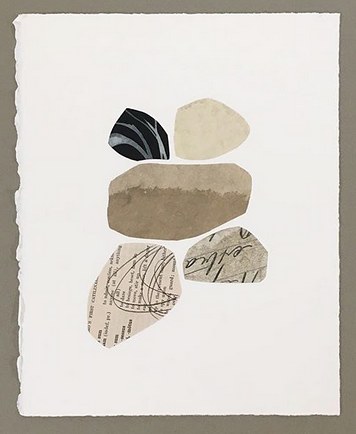
from her series, BALANCE
abstract collage by S A Herman
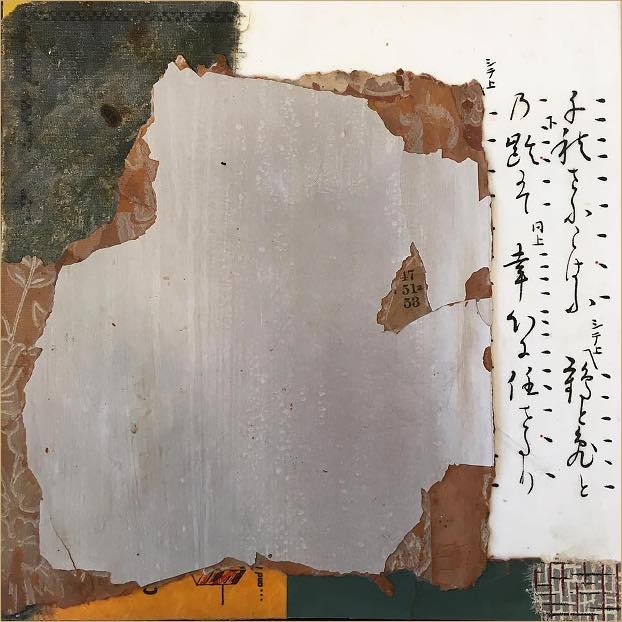
Day 18 of 40
abstract collage by C Neubauer
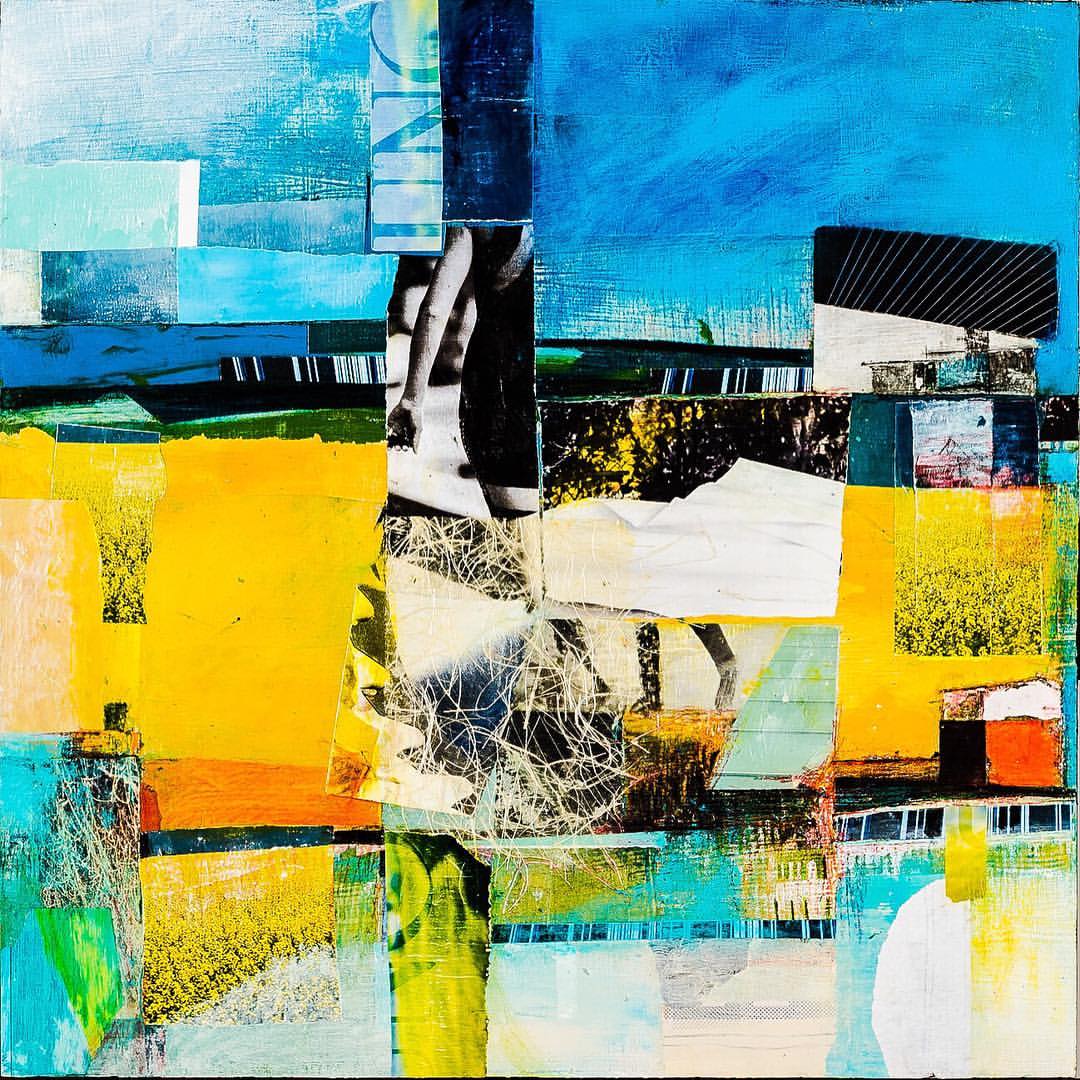
Red Cottage — from her series, SENSE OF PLACE
abstract collage by P A Turner
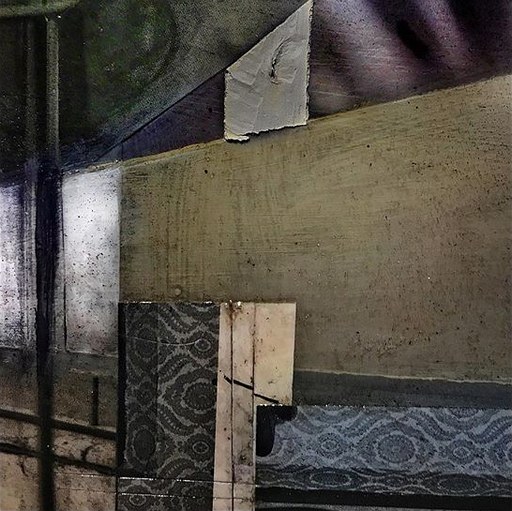
(title unknown)
abstract collage by J C Martin
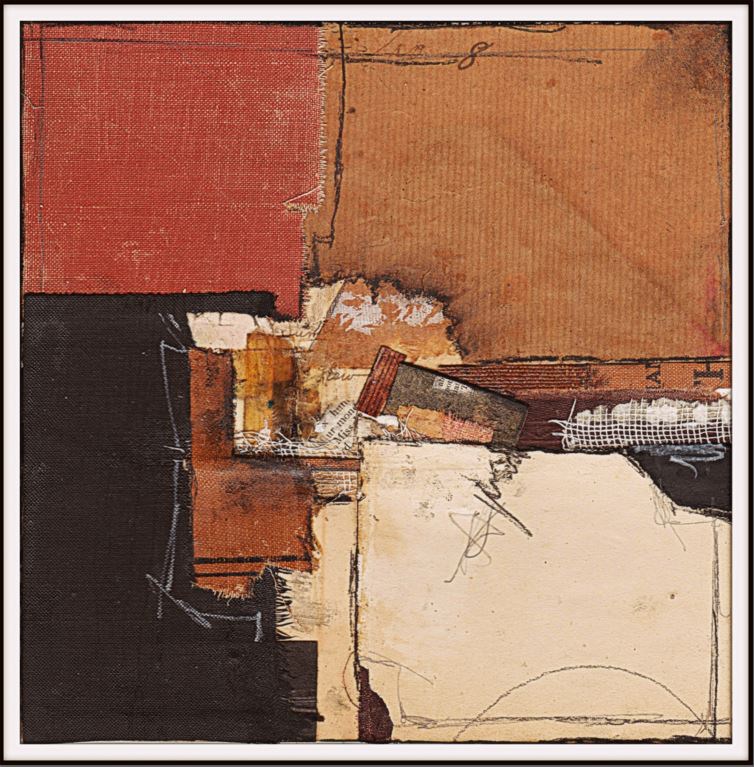
Reap
abstract collage by G Cooper
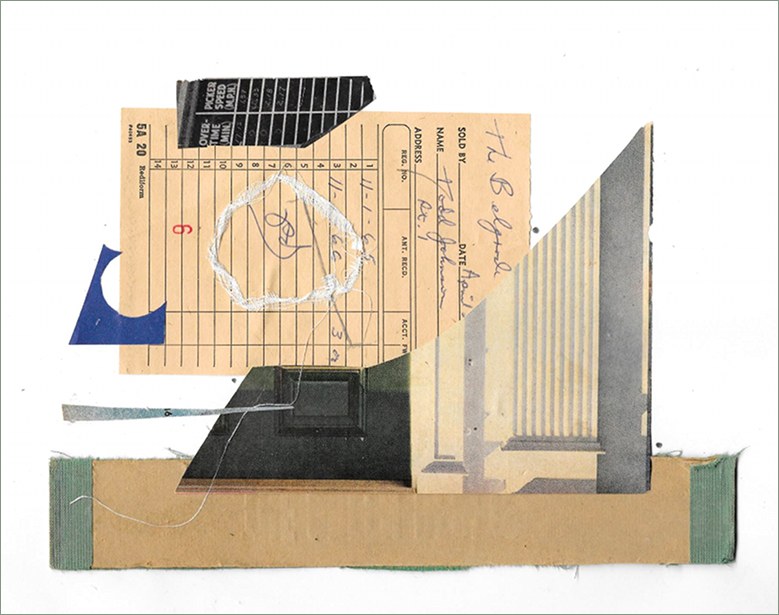
Cognitives and Conclusions
abstract collage by S Ringler
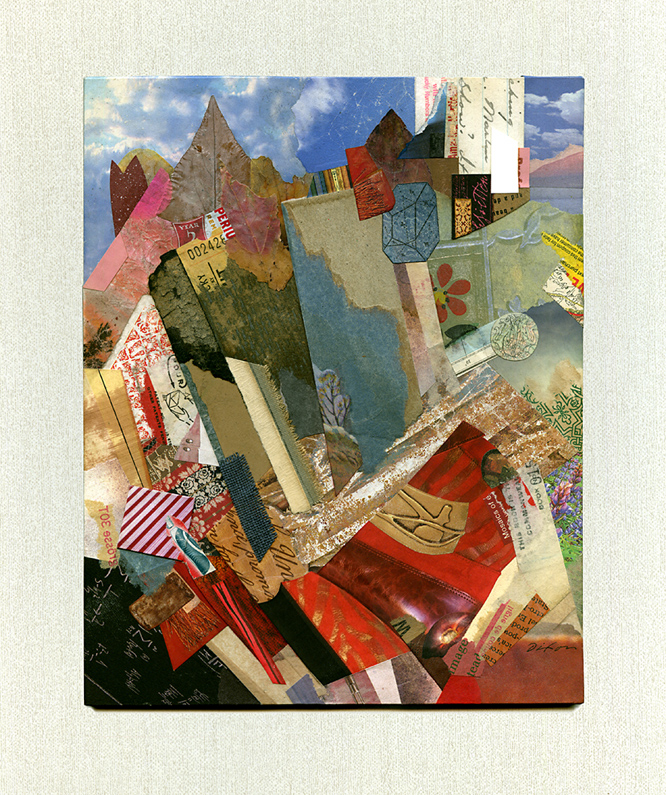
Dynamic Stability
abstract collage by J A Dixon
Purchase this artwork.
Posted in Abstraction, C Chapman, C Emeleus, C Neubauer, Collage, Cubism, D Ellington, D McKenna, Folk Art, G Cooper, Influences, J A Dixon, J C Martin, J Cornell, J Gris, K Schwitters, L Letscher, M Tidwell, Merz, P A Turner, P Picasso, S A Herman, S Kraft, S Ringler, W Strempler, Z Collins | No Comments »
Saturday, February 3rd, 2018
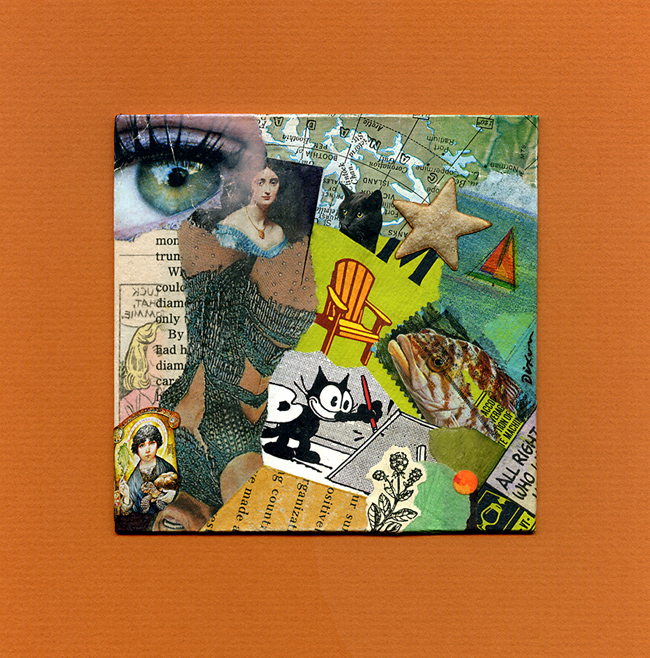
Star Baby Feline
collage miniature by J A Dixon
4.25 x 4.25 inches
private collection
a salute to the 70th birthday of Burton Cummings
Posted in B Cummings, Homage, J A Dixon | No Comments »
Saturday, January 13th, 2018
“I have always tried to exploit the photograph. I use it like color, or as the poet uses the word.”
— Hannah Höch
It is always a temptation for a so-called blogger to dangle a “best of” or “top twenty” list to entice a visitor, and, of course, we see this tactic used almost on a daily basis in various fields of art and entertainment. How many of us have gone online and swallowed just such a colorful lure? On the most obvious level, the whole stimulus-response thing is a bit silly, but the potential to learn something new does exist, or to sharpen our own sense of quality, preference, and discernment. Each of us is free to have viewpoints, as long as we recognize them as personal opinions, and avoid casting them about as certitude. Isn’t there enough of that going on these days? (Yes, dear guest, that is merely my perspective.) 
What does this have to do with collage? Well, I just paid a visit to a page at AnotherMag.com (in response to the aforesaid bait), and I learned for the first time about three collage artists who were new to me, a working artist who purports to ruminate on “all things collage.” In this particular case, there may have been an explicit effort to achieve an overdue gender balance for a post intended to spotlight the Höch retrospective at the Whitechapel Gallery in London, but one could question the absence of Paolozzi, Rauschenberg, Johnson, Hamilton, or Kolář. To not include at least one of these men as a key figure in the history of collage brings no meaningful discredit on any of the artists, but only on the list. (And that, too, is just my opinion).
Nevertheless, I am not ashamed to accentuate the gaps in my collage literacy and to feature three noteworthy female artists: Eileen Agar, Nancy Spero, and Annegret Soltau. Examples of their work should have appeared here long before now.

Woman reading
by Eileen Agar, 1936
Museum of New Zealand

Protagonists
by Nancy Spero, 1989
disposition unknown

Grima – mit Katze
by Annegret Soltau, from her 1986-97 series
Vero Group Collection, Houston, Texas
Posted in A Soltau, Assemblage, Collage, Criticism, Dada, E Agar, E Paolozzi, Exhibitions, G Braque, H Höch, Influences, J Cornell, J Kolář, J Stezaker, J Treece, K Schwitters, Links, M Ray, Merz, N Spero, P Donley, R Hausmann, R Johnson, R Rauschenberg, Surrealism | No Comments »
Monday, January 8th, 2018
“Whatever comes to mind is a good thing. Don’t think before you work, work before you think.”
— George Condo
As collage artists, we respond to the visual ingredients. Twyla Tharp calls it “scratching.” It has been described by various artists over the decades: Don’t wait for an idea. Don’t spin a mental wheel. If you are a storyteller, write some words. If you are painter, work the brush. If you are a dancer, let movement happen. At any rate, just go to the studio and do what you do. React to what takes place. Before long, there will be something worth thinking about.
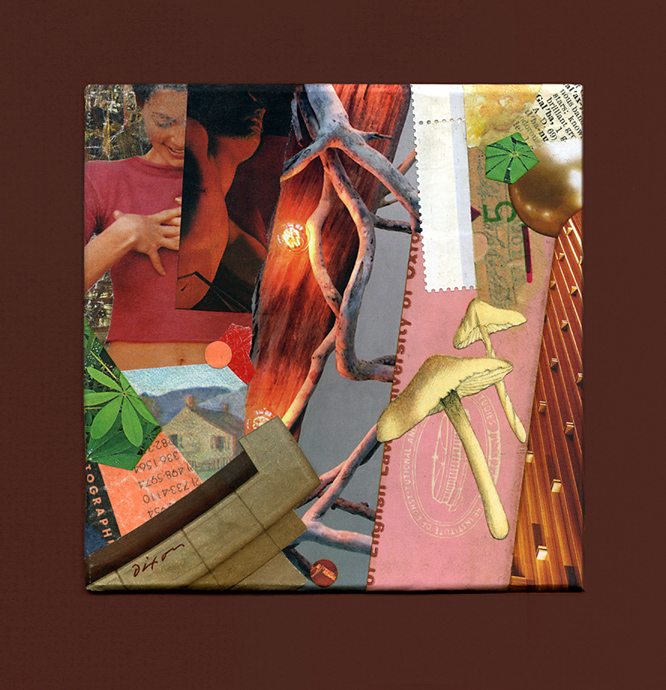
Fairy Ring Flux
collage miniature by J A Dixon
4.6875 x 4.6875 inches
Purchase this artwork!
Posted in 1) Available!, Ingredients, J A Dixon, Methodology, T Tharp | No Comments »
Tuesday, December 26th, 2017
“There are, it seems, two muses: the Muse of Inspiration, who gives us inarticulate visions and desires, and the Muse of Realization, who returns again and again to say ‘It is yet more difficult than you thought.’ This is the muse of form. It may be then that form serves us best when it works as an obstruction, to baffle us and deflect our intended course. It may be that when we no longer know what to do, we have come to our real work and when we no longer know which way to go, we have begun our real journey. The mind that is not baffled is not employed. The impeded stream is the one that sings.”
― Wendell Berry
Someone once opined that “since most people feel that the world gets worse, not better, the only basis of genuinely popular art is nostalgia.” There may be some truth in that. However, one could recall examples of entirely new things gaining wide popularity, too, especially in music. The visual artist must accept that most people will never grant them the position that they ascribe to musical and culinary artists, because nothing in life will supplant music and food in their daily routine of emotional attachments (although, with the current explosion of binge-on-demand streaming entertainment, other creatives may be poised to achieve a similar status).
When I reflect on my fifth year of musing about collage at this blogsite and look ahead to the next, I realize just how much work there is in front of me to puzzle through some of these ideas.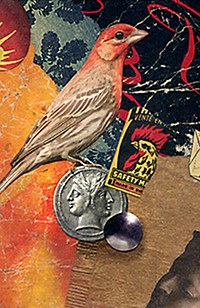 Like many artists, I hope to juggle goals that may at first seem in contradiction: to attract patrons, to inspire colleagues, and to please myself. I don’t see any way to approach it other than to balance elements of our past (the appeal of the nostalgic), our present (the lure of the trend), and our future (the surprise of the new). How convenient that balancing elements in Janus-like fashion just happens to be my craft!
Like many artists, I hope to juggle goals that may at first seem in contradiction: to attract patrons, to inspire colleagues, and to please myself. I don’t see any way to approach it other than to balance elements of our past (the appeal of the nostalgic), our present (the lure of the trend), and our future (the surprise of the new). How convenient that balancing elements in Janus-like fashion just happens to be my craft!
In all seriousness, collage (and the related montage-inherent media) are almost uniquely suited to the challenge at hand, and perhaps that is why post-centennial collage is becoming a worldwide phenomenon in the 21st. Diving more deeply into this quandary will provide ample food for thought in the coming year. Meanwhile, I shall make more!
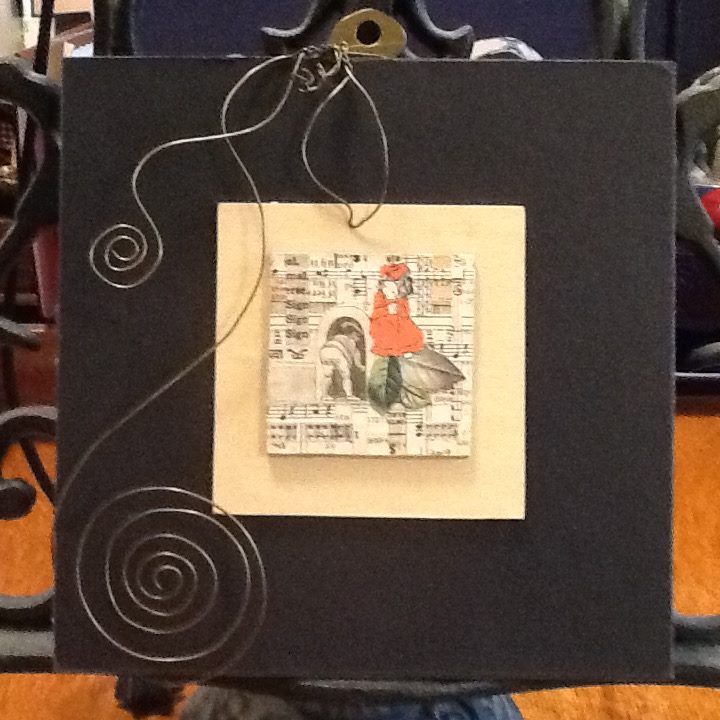
Nikki Soppelsa
Look ahead to a discussion of “ultra miniaturism” in collage.
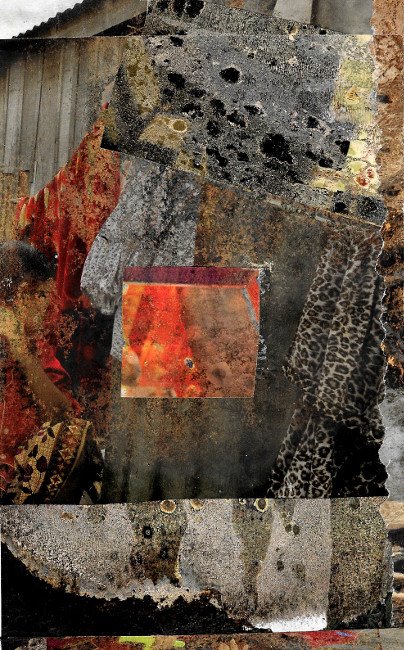
Robert Hugh Hunt
Stay tuned for a review of contemporary collage abstraction.
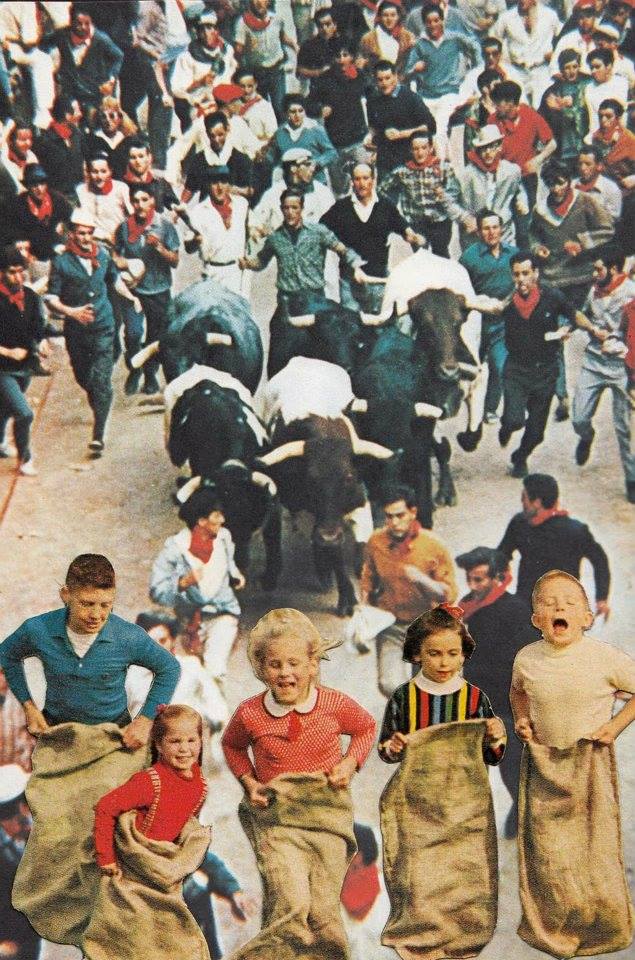
Terry R Flowers
Is it time to peruse the long history of humor in collage?

Kurt Schwitters
And I shall never tire of studying and sharing the work of KS.
Posted in Assemblage, Bibelot Series, Blog Years, Collage, J A Dixon, Music, N Soppelsa, Nostalgia, Priorities, R H Hunt, T R Flowers, W Berry | No Comments »
Tuesday, December 5th, 2017
“Proper, untainted pride is not a bad thing. It can even make you try harder sometimes.”
— B L Cummings
I must confess that I am elated and gratified to learn from the Kentucky Arts Council that I have been designated as a “newly adjudicated” participant in the Kentucky Crafted Program.
It is not my nature to feel entitled, and so I approach any initiative supported by taxpayers with a respectful awareness of their essential role.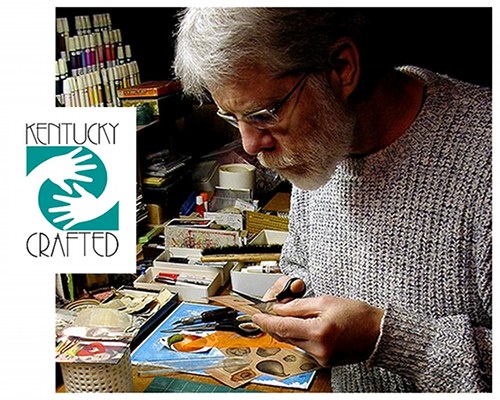 It pleases me to know that I submitted for evaluation some of the best work I have done, and look ahead with anticipation to fulfilling the purpose of the program and returning a dividend on any public investment made in my artistic goals. I am also keenly attuned to the unmet economic potential that the so-called “creative class” can contribute to my adopted commonwealth. But make no mistake, I would never assume that those of you who are kind enough to visit a site devoted to “all things collage” would have an overwhelming interest in my personal goings-on. Take it as a mere news flash. The proof is in the proverbial pudding, of course.
It pleases me to know that I submitted for evaluation some of the best work I have done, and look ahead with anticipation to fulfilling the purpose of the program and returning a dividend on any public investment made in my artistic goals. I am also keenly attuned to the unmet economic potential that the so-called “creative class” can contribute to my adopted commonwealth. But make no mistake, I would never assume that those of you who are kind enough to visit a site devoted to “all things collage” would have an overwhelming interest in my personal goings-on. Take it as a mere news flash. The proof is in the proverbial pudding, of course.
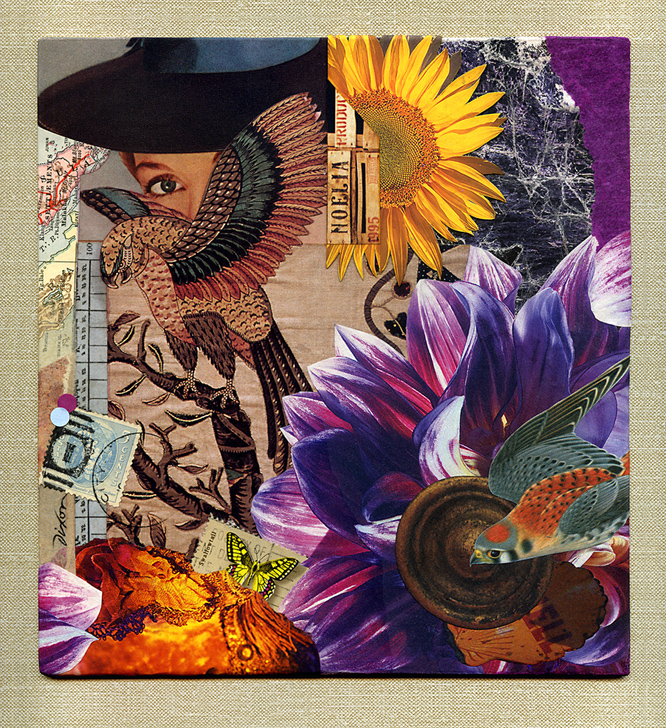
Noelia Brim Falcon
collage miniature by J A Dixon
7.8125 x 8.375 inches
Purchase this artwork!
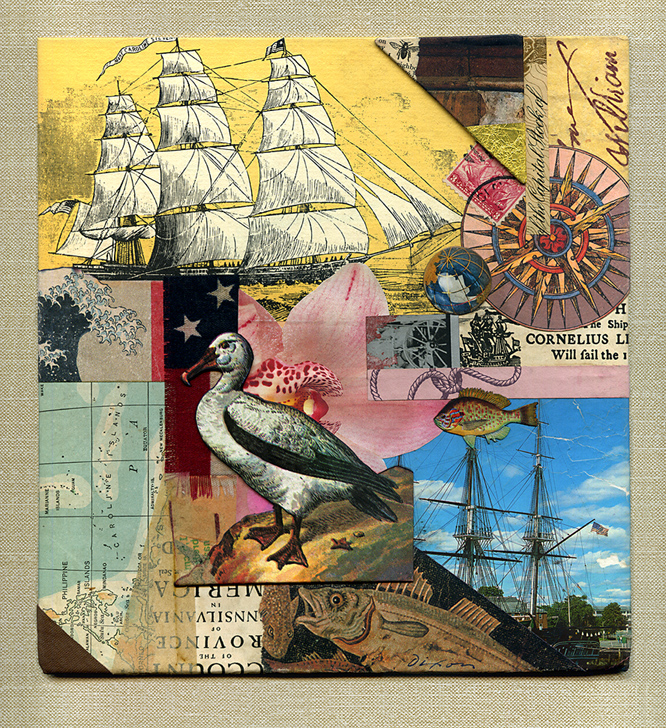
Caroline Knot Cornelius
collage miniature by J A Dixon
7.8125 x 8.375 inches
Purchase this artwork!
Posted in 1) Available!, B Cummings, Crafted Series, J A Dixon, Nautical Series, Priorities | No Comments »
Monday, November 20th, 2017
“Tie small-scale contrasts together compositionally, but also large-scale contrasts; for instance: confront chaos with order, so that both groups, which are separately coherent, become related when they are placed next to or above each other; they enter into the relation of contrast, whereby the characters of both sides are mutually heightened.”
— Paul Klee, 1915
For the most part, I consider any collage artwork that is 8 x 10 inches or smaller to be a “miniature,” but this is not a definition that I expect anyone else to adopt. It is just a personal rule of thumb within my nomenclature, based on a conviction that the small format has been at the heart of the evolving medium from the outset and continues to be the wellspring of innovation.
Cohesive collage artworks at this scale have always been qualified to stand on their own as finished creations, but I am increasingly fascinated by the process of assembling multiples or embedding miniatures into composite designs. It boosts their perceived character as “artifacts,” and offers the practitioner another level of discernment that balances intuitive spontaneity with more considered design judgments.
This is a series that I shall enjoy expanding.
Please let me know what you think.
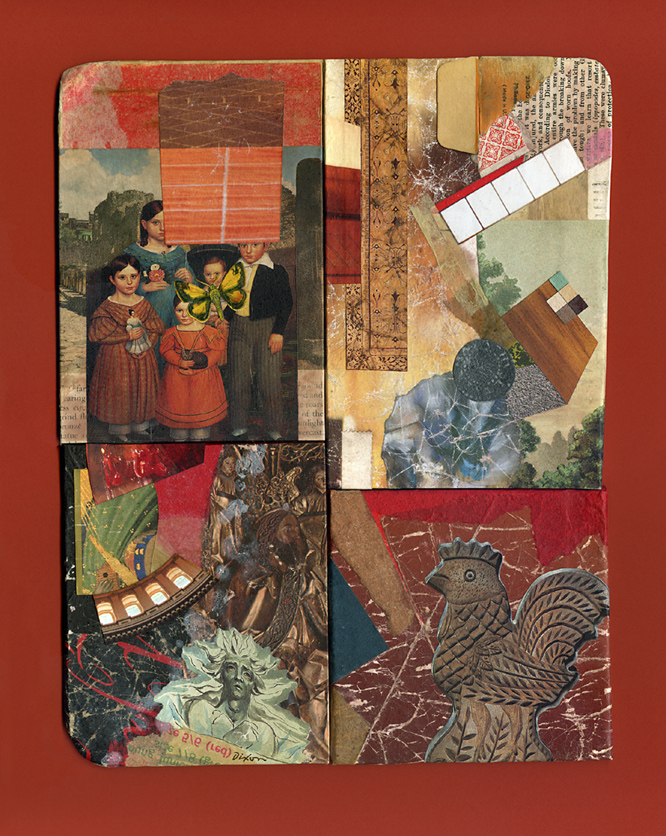
Fresh-Full of Youth
combined collage miniature segments
J A Dixon, 11 x 14 inches
Purchase this artwork!
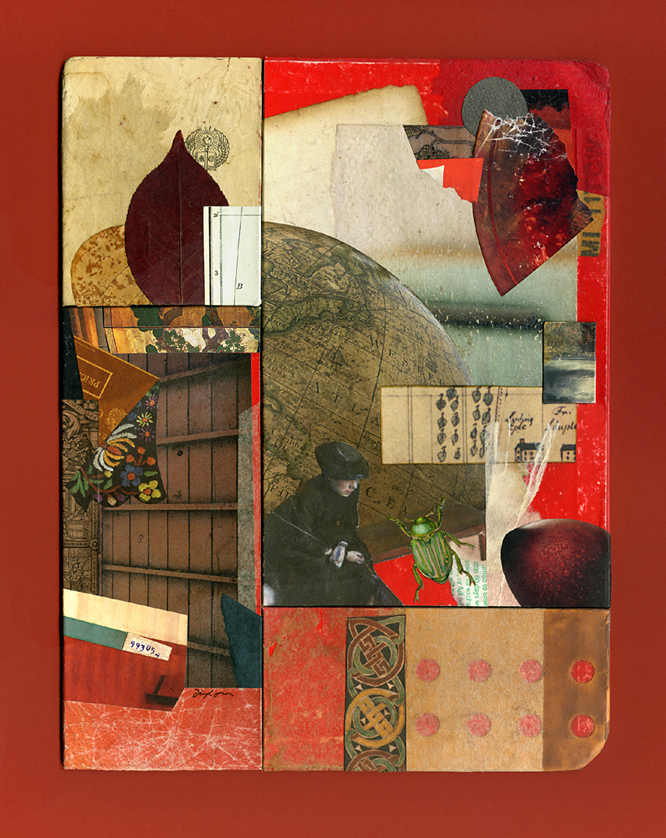
Clarissa’s Beetle
combined collage miniature segments
J A Dixon, 11 x 14 inches
Purchase this artwork!
Posted in 1) Available!, Collage, Embedded Miniatures, Ingredients, J A Dixon, Larger Works, Methodology, Multiple Miniatures, P Klee | No Comments »
Monday, September 11th, 2017
“As a husband, you have to remember the crucial importance of three little words — ‘I was wrong.’ That will take you a lot further than ‘I love you.’”
— Charlton Heston
After pondering what to do with my stash of birds for far too long, I decided to start a new series that I describe as “Crafted.” Here is an example — a 35th Anniversary present to my indispensable partner and dearest friend.
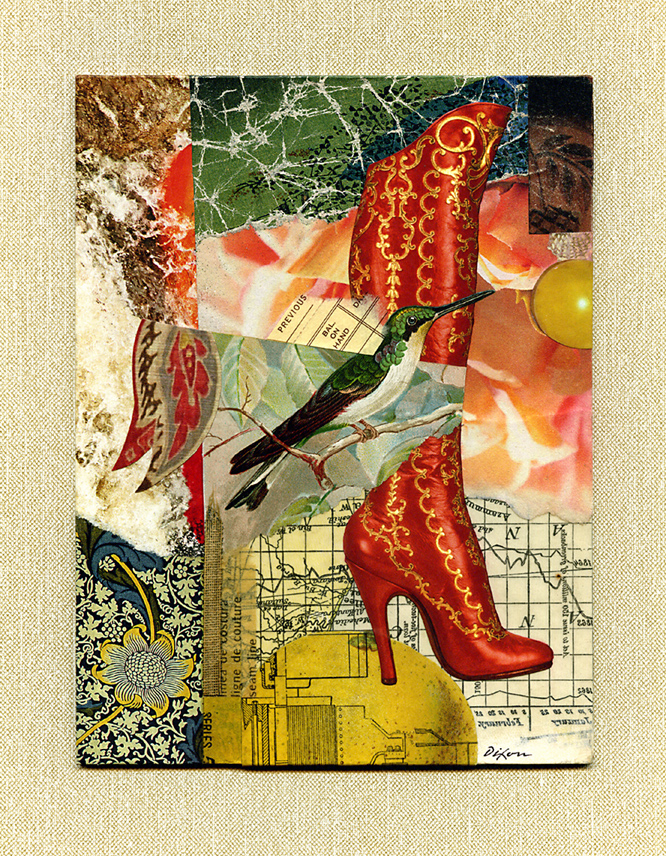
That Red Boot
collage miniature by J A Dixon
5.375 x 7.25 inches
collection of Dana Dixon
Posted in Collage, Crafted Series, D L Dixon, Gift Art, J A Dixon | No Comments »
Wednesday, July 26th, 2017
“I have to trust for that crazy moment.”
— Christoph Niemann
It is no secret that creative work has not been flying off the walls in the current art market, but there is something about the theme of 225: Artists Celebrate Kentucky’s History, hanging this summer in the Kentucky Artisan Center at Berea, that has provoked an unusual number of sales, including the mixed media construction that I titled I Must Have Kentucky and featured here in March. The kind folks at the Center asked me to deliver a replacement piece sight unseen. Sounded good — but the first work had made a serious dent in my stash of Kentucky-related scrap. I’ll admit that I scratched my head about what I could come up with. Fortunately, I had a second salvaged metal star that enabled me to utterly obliterate what was left of my repository of images with any connection to the Bluegrass State, including material from discarded books, hymnals, maps, magazines, product labels, and postage stamps.
I began with a goal of contrasting a simple dimensional configuration with a density of images and symbolic messages, but I was a bit dubious about where it would lead me. I recall the distinct turning point when I took comfort in the thought, “This is starting to look good. This just might work out.” How can one go wrong with images of Kentucky’s towering native sons? Her historical presence will always be linked to Abraham Lincoln (perhaps America’s greatest president, and who has come to represent much more to the world), as well as Louisville’s Muhammad Ali (perhaps America’s greatest athlete, and who also has come to represent much more to the world). Either, or both, can be called “The Greatest.” Can any other state match that? Other individuals featured in the work are Lincoln’s first lady, Mary Todd — plus Daniel Boone, Simon Kenton, Loretta Lynn, Robert Penn Warren, Ephraim McDowell, Ned Beatty, Frederick Douglass, George Rogers Clark, and Jefferson Davis. The viewer will also find visual references to faith, sport, thoroughbreds, whiskey, coal, tobacco, the U.S. Constitution, and the Civil War, with an institution central to the bitter national conflict: slavery. I am pleased with how the companion to its larger half-brother turned out. Perhaps it also will find a home, and then I can assign myself to replenishing my Kentucky file. The show lasts until September 23rd.
As I’ve probably told you before, I enjoy creating works that have visual appeal from across a room, but also provide a depth of interest on close observation, with stimulating details at an intimate viewing distance. A future entry will zoom in for another one of our nosey examinations.
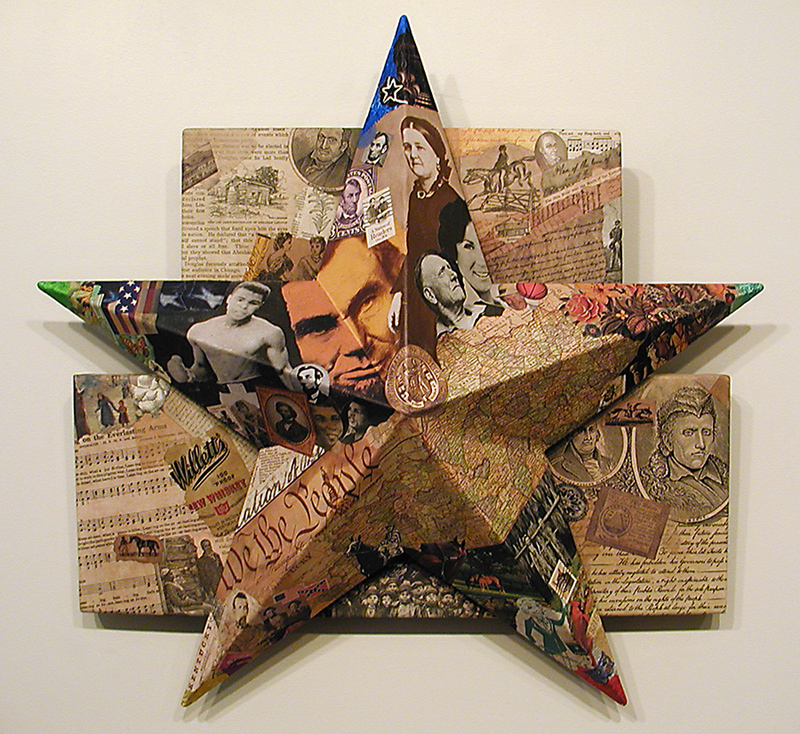
Star of Commonwealth
mixed-media collage construction by J A Dixon
22 x 21 x 6 inches
available for purchase
Posted in 1) Available!, Artifacts, Assemblage, C Niemann, Collage, Exhibitions, J A Dixon, Larger Works | No Comments »
 Most, if not all, have presented themselves in a collage format during the tumultuous century that followed. From my point of view, the humor we may find in Dada and Surrealism are byproducts of the movements’ overarching goals. But, we might ask, was the avant-garde intending to be funny at times, or were they deadly serious about weaponizing shock value as a visual tactic, bequeathing any laughs to those of us who would arrive many decades later? On the other hand, how can poking fun at established traditions and ideologies not be classified as humor? I welcome the thoughts of all readers who have chuckled at the work of Hannah Höch, or sensed dark amusement in a Max Ernst composition. Even when outrage from a target group is the primary objective, a subversive artist also may be hoping to elicit a humorous response from those of like mind. As we know, humor, like beauty, rests in the eye of the beholder.
Most, if not all, have presented themselves in a collage format during the tumultuous century that followed. From my point of view, the humor we may find in Dada and Surrealism are byproducts of the movements’ overarching goals. But, we might ask, was the avant-garde intending to be funny at times, or were they deadly serious about weaponizing shock value as a visual tactic, bequeathing any laughs to those of us who would arrive many decades later? On the other hand, how can poking fun at established traditions and ideologies not be classified as humor? I welcome the thoughts of all readers who have chuckled at the work of Hannah Höch, or sensed dark amusement in a Max Ernst composition. Even when outrage from a target group is the primary objective, a subversive artist also may be hoping to elicit a humorous response from those of like mind. As we know, humor, like beauty, rests in the eye of the beholder. with the bulk of his far-reaching breakthroughs behind him, displayed his acknowledged sense of humor when he created “For Kate.” Both were envisioning the coming thing — Pop Art (Popism) — a movement to throttle the contemporary scene some 20 years later. Steve Martin got it right when he explained, “Chaos in the midst of chaos isn’t funny, but chaos in the midst of order is.” Did Mark Twain anticipate a Mel Brooks and how the art of stimulating laughter could enable a towering denunciation of fascism? Are there times when creativity’s greatest power is best unlocked with a joke?
with the bulk of his far-reaching breakthroughs behind him, displayed his acknowledged sense of humor when he created “For Kate.” Both were envisioning the coming thing — Pop Art (Popism) — a movement to throttle the contemporary scene some 20 years later. Steve Martin got it right when he explained, “Chaos in the midst of chaos isn’t funny, but chaos in the midst of order is.” Did Mark Twain anticipate a Mel Brooks and how the art of stimulating laughter could enable a towering denunciation of fascism? Are there times when creativity’s greatest power is best unlocked with a joke? Now indulge me as I feature a few examples of humor in collage from artists that have touched my funny bone. I must admit that this subject brings to mind Terry R Flowers, perennial wit in the art form. It would be too easy to fill a screen with an array of his artistic wisecracks, especially in his role as veteran collaborator with Robert Hugh Hunt.
Now indulge me as I feature a few examples of humor in collage from artists that have touched my funny bone. I must admit that this subject brings to mind Terry R Flowers, perennial wit in the art form. It would be too easy to fill a screen with an array of his artistic wisecracks, especially in his role as veteran collaborator with Robert Hugh Hunt.














































